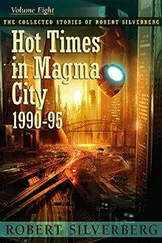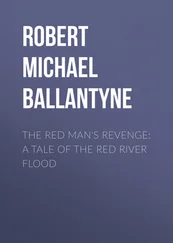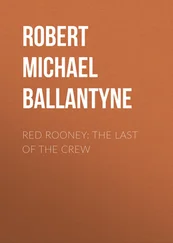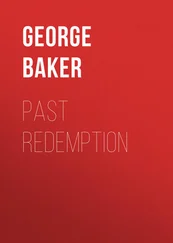Body proportions gave the early dinos unprecedented agility. Joints and muscles were arranged so that the backbone in the neck region was coiled into an S-shaped curve, ready to strike downward and forward. Thoracic ribs were deep, to house a capacious heart. And the entire hindquarters were massively reinforced by many connections between the lower back and the hip bones, another emphatically birdlike feature that made the hindlegs capable of quick bursts of speed.
The next rock layer above the Chug is the Jurassic - the Age of Whip-Tails - when gigantic herbivores armed with fifty-foot tail weapons ruled the landscape. The somber gray and black badlands are full of bones from Barosaurus, Diplodocus, and
Brontosaurus, representatives of the dominant family that would suffer almost complete extinction at the end of the Period. And we’ve found short-tailed brontosaurians in the Jurassic too - Brachiosaurus and Haplocanthosaurus - close kin of the astrodons who would come a bit later, in the Early Cretaceous.
Rarest of the Jurassic dinos are the armor-plated ankylosaurians. We found one skull in the summer of 1993. This clan would expand in the early days of the Cretaceous, blossoming into many new species, Gastonia among them.
The Jurassic predators are more advanced than their Chugwater antecedents, and closer to raptors in design. We’ve got splendid specimens of Allo-saurus, including all the bones from the hand. Each bone in the forepaw has precisely formed joints so the huge claws on thumb and forefinger converge as they flex downward. The wrist bones give the entire allosaur hand the capacity to swivel quickly side to side. Raptors would inherit their basic hand structure from allosauroid ancestors.
Allosaurs prefigure raptors in many ways - overall body configuration, shorter, more compact torso, longer hindlegs, and sharper S-flexure in the neck. Allos weren’t the Darwinian grandfathers of raptors, not the direct ancestors. But they were a sort of evolutionary uncle, close kin of the actual ancestors. So allosaur construction gives us a picture of the raw material from which Nature created the raptor family.
Allosaur skulls from Utah are so well-preserved that you can see where each lobe of the brain fit and how the nerves exited the braincase bones to the sensory compartments. Eyesight was superb, and the avian pattern of nerves indicates that allosaurs saw in color as hawks and eagles do today. Allosaur olfactory chambers in the snout were large, proving that the sense of smell was of a very high order too. Raptor ancestors would carry sensory equipment of a similar adaptive grade.
The first day of each field season I climb up to the Breakfast Bench, a modest ridge just above the last Jurassic layers. There’s nothing in the rocks here to suggest that a tremendous biological revolution had occurred at this time. But the dark gray layer, streaked with orange, marks the greatest crisis in the middle of the dinosaurian era, one hundred and forty million years ago: the transition from Jurassic to Cretaceous, from the Age of Allosaurs to the Age of Raptors.
Breakfast Bench fossils are mostly small, and the best time to find them is late afternoon, when the low-angle sun highlights tiny teeth and bone fragments lying on the gentle erosion slopes. Here we find holdovers from the Jurassic dynasties, like teeth from whip-tails, as well as the minute jaws from the new wave of Cretaceous mammal species.
Crocs swarmed in great abundance in the Breakfast Bench times. Thousands of their conical tooth crowns litter the outcrop like spent bullets on a forgotten Civil War battlefield. I treat each croc tooth as a poignant memento of a reptilian life that was lived well.
When I was in grade school in the 1950s, we were taught that crocodiles were mindless, cold-blooded killers. But we know better now. Despite their ferocious jaws, crocs are sentient beings with the most complex family life of any present-day Reptilia.
Mother crocs guard their nests with admirable loyalty and respond to the chirping alarm calls of hatchlings struggling to free themselves from their eggshells.
In some croc species mother and father join together in helping their young survive the first few dangerous days of life outside the egg. There’s no doubt that croc mothers feel a bond with their young. And they are capable of feeling grief, too. When a hatchling dies before it can reach the water, the mother will sometimes hold the lifeless body in her mouth for a long time before gently laying the youngster down.
Crocs let us envision the bonds that tied dinosaurian societies together. Crocs are living fossils. They retain an anatomical pattern close to that of Triassic dinosaur ancestors, and in nearly every way the Jurassic dinosaurs were more advanced than crocodiles, including their hips, shoulders, and legs. So I must conclude that Jurassic dinosaurs were more advanced in their social structure, too.
Two miles north of the Breakfast Bench outcrop we have proof. Limestone beds that border a shallow lake are full of footprints from a giant Astrodon-like dinosaur. These footprints aren’t scattered haphazardly, each trackway leading off in a different direction. Instead, the trackways are tightly organized into herds with twenty or thirty astros traveling together, the largest individuals positioned at the edge of the herds, the smallest huddled in the center.
When I stop to fill in the pages of my field book with the day’s observations, I like to sit on the rim of one of the biggest tracks, a footprint a yard wide.
The lime mud pushed up by the thrust of the hind-paw looks fresh even though it has been frozen into stone for a million centuries. This depression in the limestone is vivid evidence of the enormous power in astro muscles and ligaments and of the great beast’s feelings of duty to family and clan.
Just above the Breakfast Bench is the Early Cretaceous itself, a stratum of polished black gravel and sand known as the Lakota, dating from the same epoch as the Utahraptor beds of Utah and Colorado. The pale yellow Lakota sandstones make towering cliffs crowned with scrubby pines. It’s an exceptionally beautiful spot where peregrine falcons make inquisitive dives from their nests along the ridge crests.
Scientists are supposed to be dispassionate, cool-headed, and unemotional when they evaluate their data. But it’s hard for me to avoid a sense of awe when I’m hunting fossils in the Lakota. Evolution was accomplishing great things at this time and place. Thin seams of pinkish siltstone reveal carbonized branches and fragments of tree trunks, mostly from conifers. But there are broadleaved fossils, too, signaling that greatest event in floral history - the appearance of flowering plants.
The Lakota bears witness to a revolution in the animal kingdom as well. The gravels and sandstones contain iguanodon bones and pieces of armor from giant armor-plated members of the Gastonia family, evidence of a new order among the giant herbivores. Fossil beds of this age from Spain and China show that birds had reached a modern level in the structure of wings and feathers. And one precious lower jaw from England documents the existence of a creature very close to the ancestry of ourselves - Aegialodon.
The world of the top predator had been changed from the Jurassic condition. Nearly extinct were the once supreme allosaurs; in their place were their cousins the ridged-backed meat-eaters, the clan of acrocanthosaurs.
And joining the ridge-backs were the raptors, predators whose body mechanics introduced a whole new dimension to the drama of attack and defence. Raptor claw design departed from that of their allosauroid ancestors, transforming a talon fit for grabbing and holding onto prey into a weapon for slashing. While all the ridge-backs kept massive hand claws with thick tips, the raptors adopted long, slender fingers that wielded narrow, knife-like claws.
Читать дальше












